Downloaded 12 times
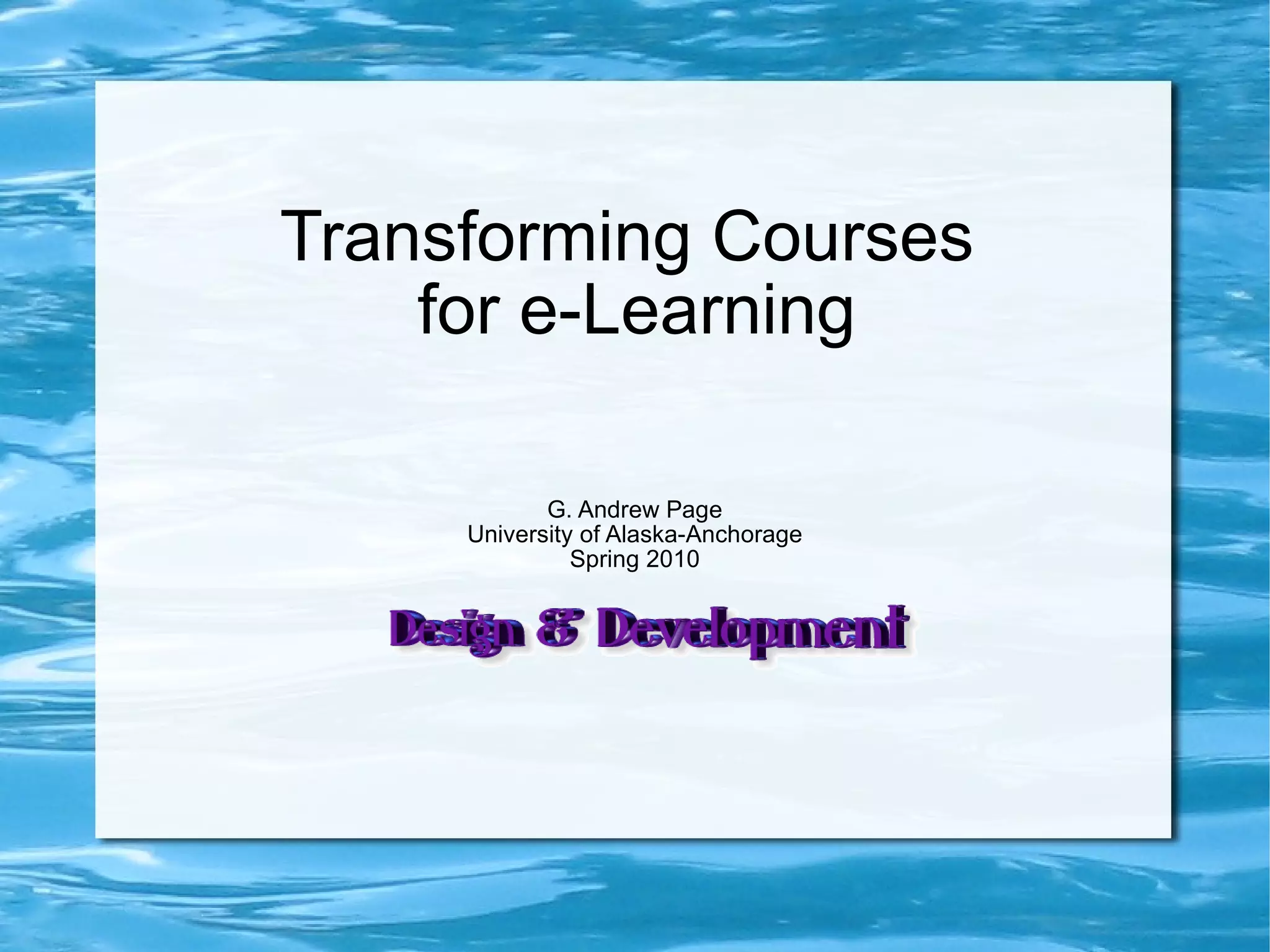
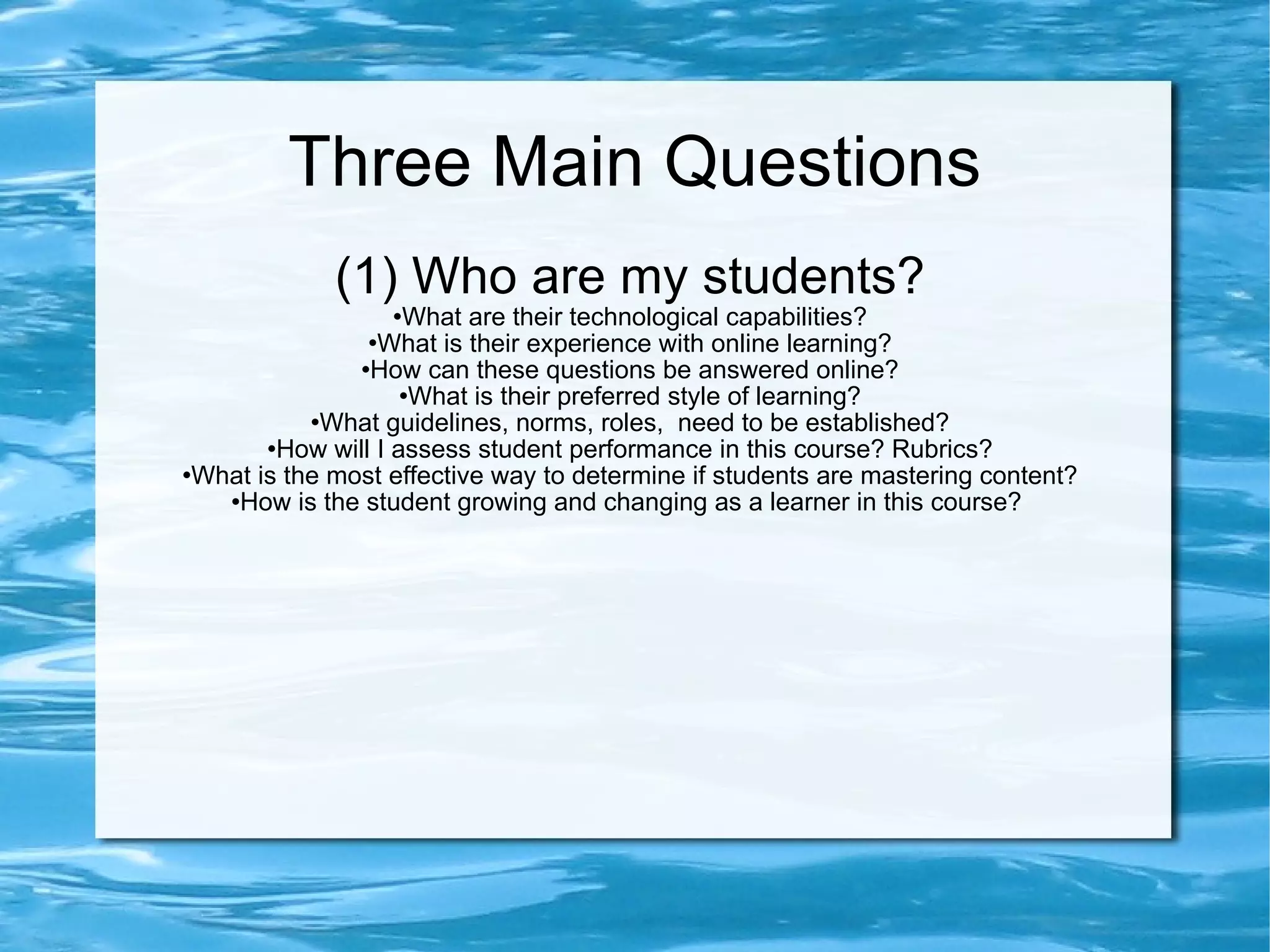
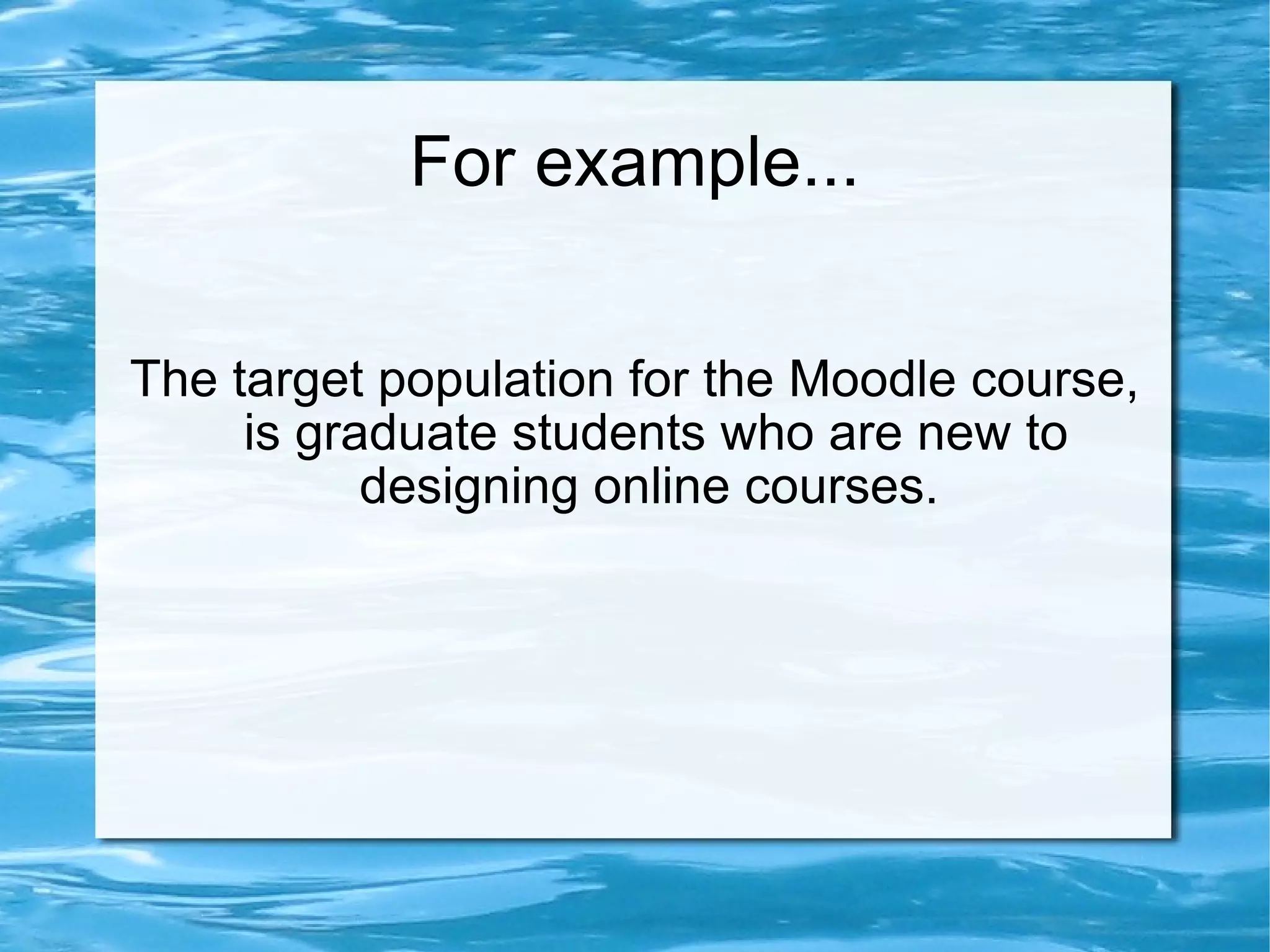
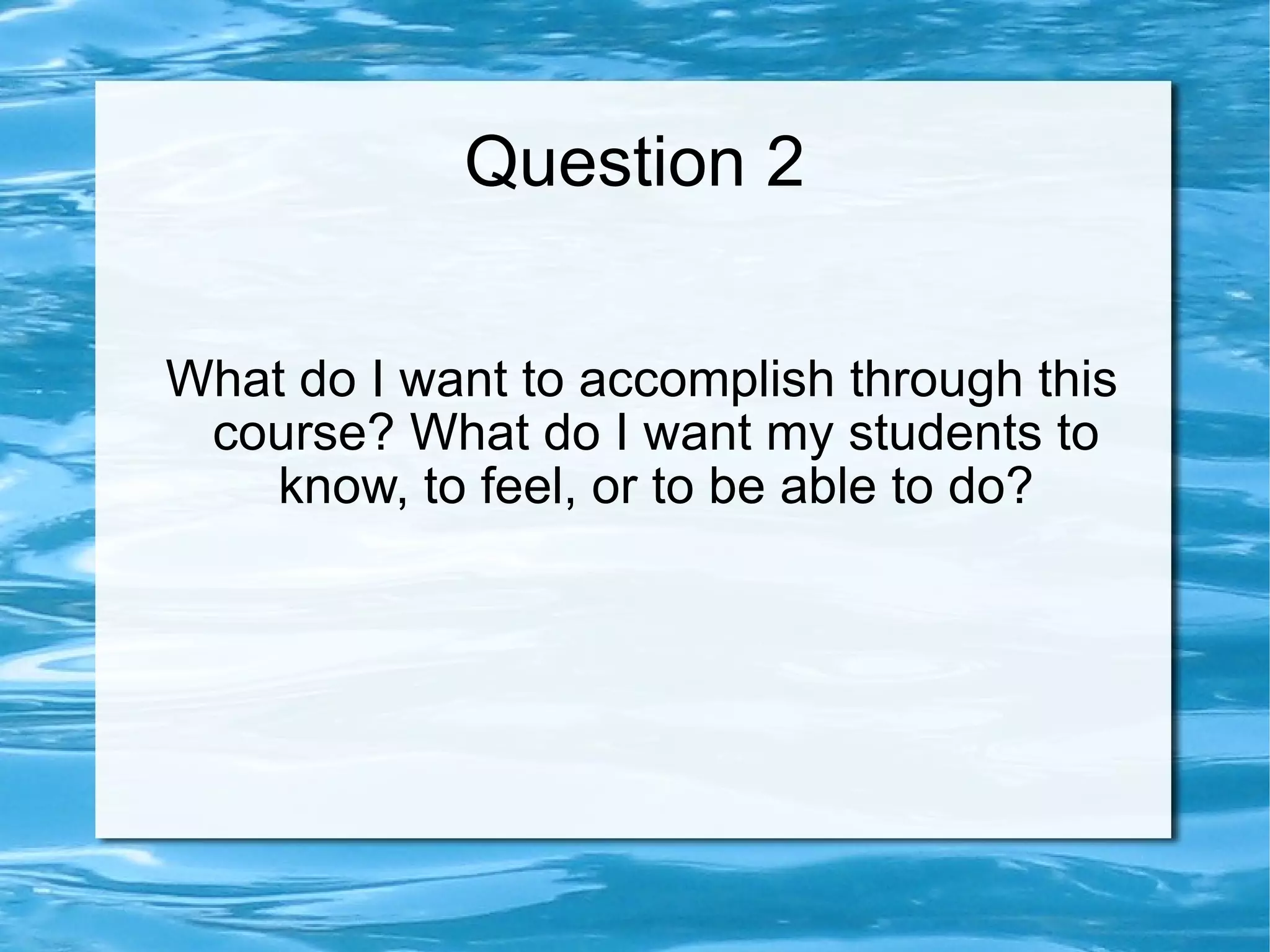
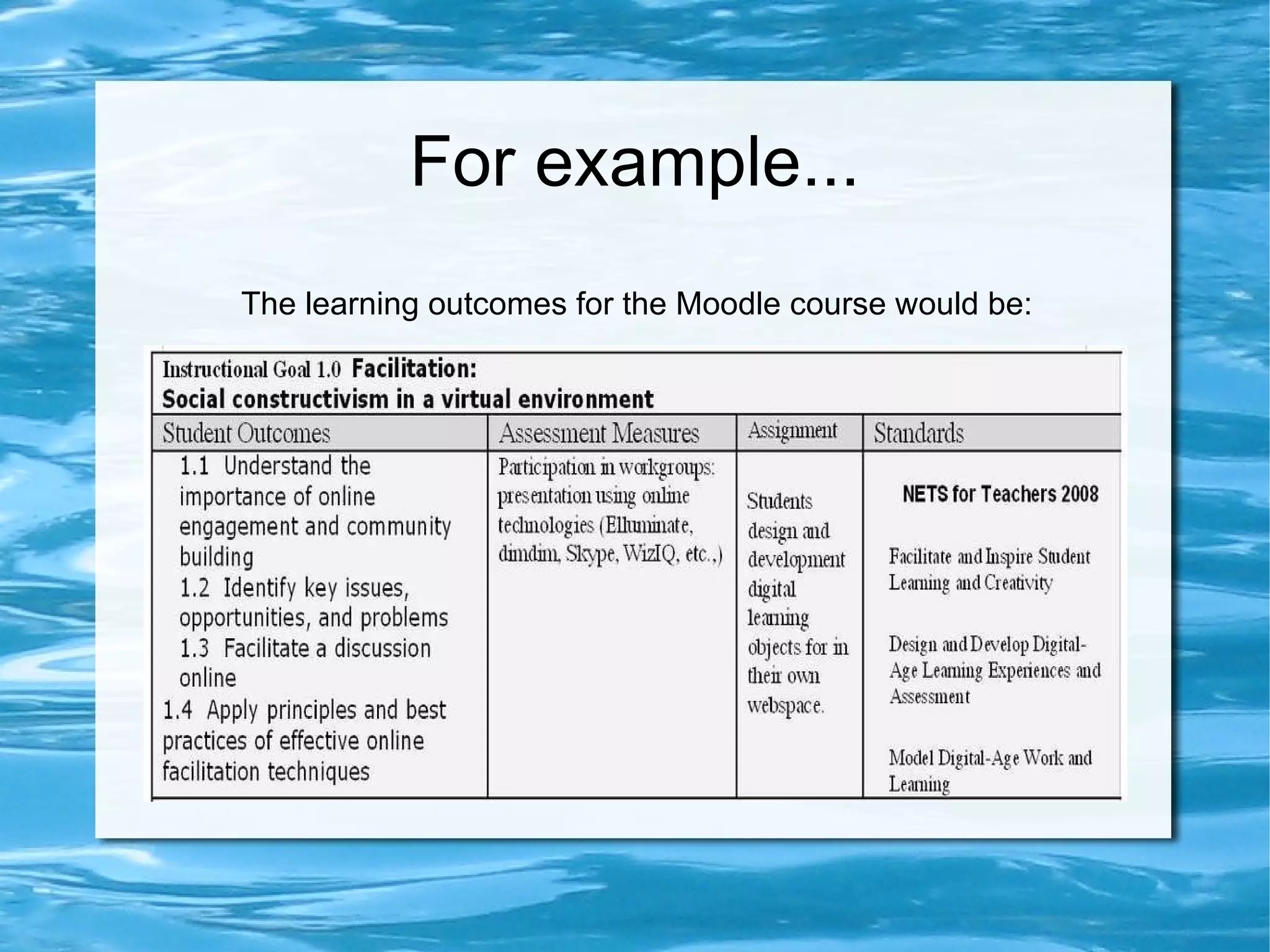
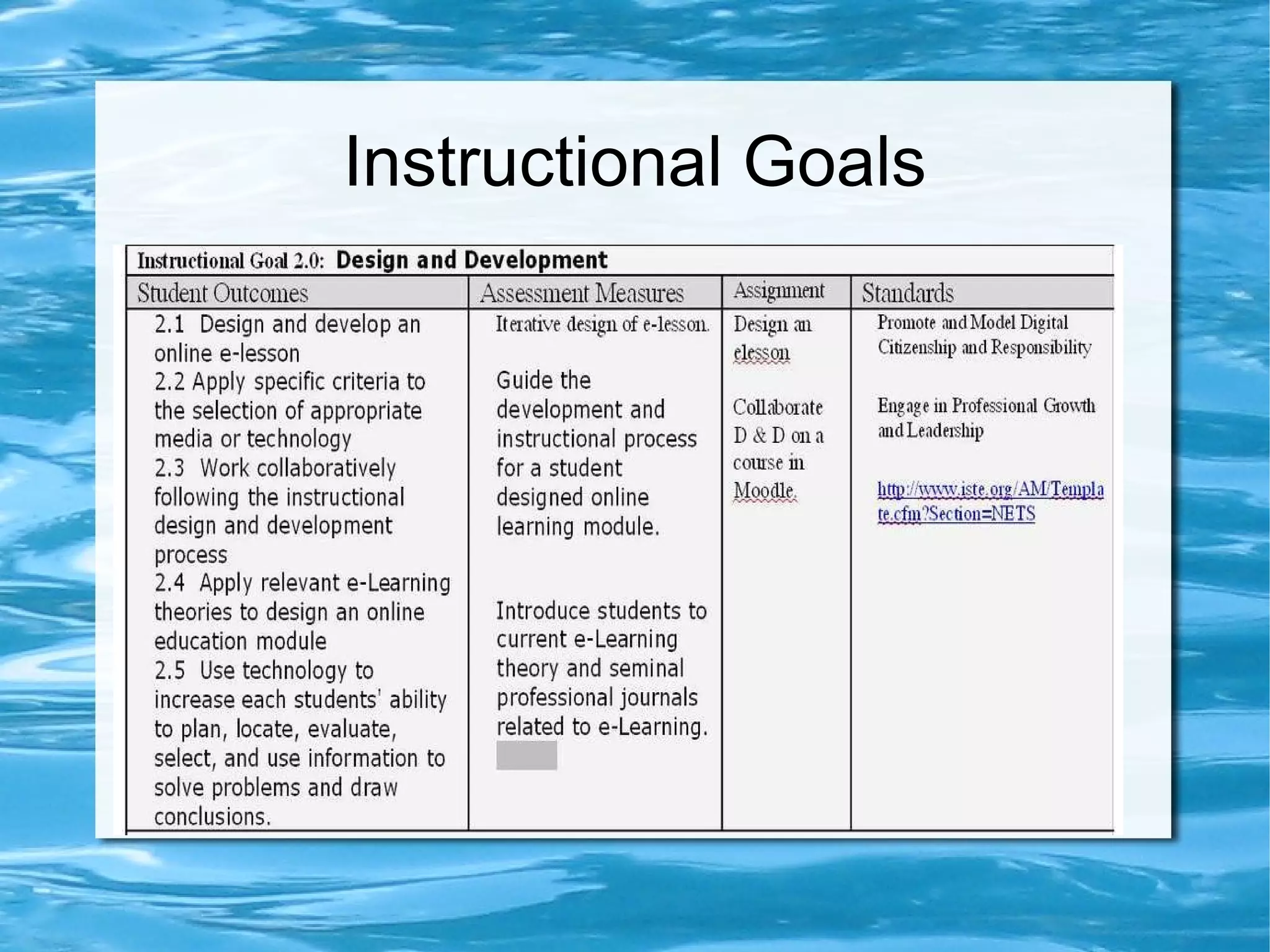
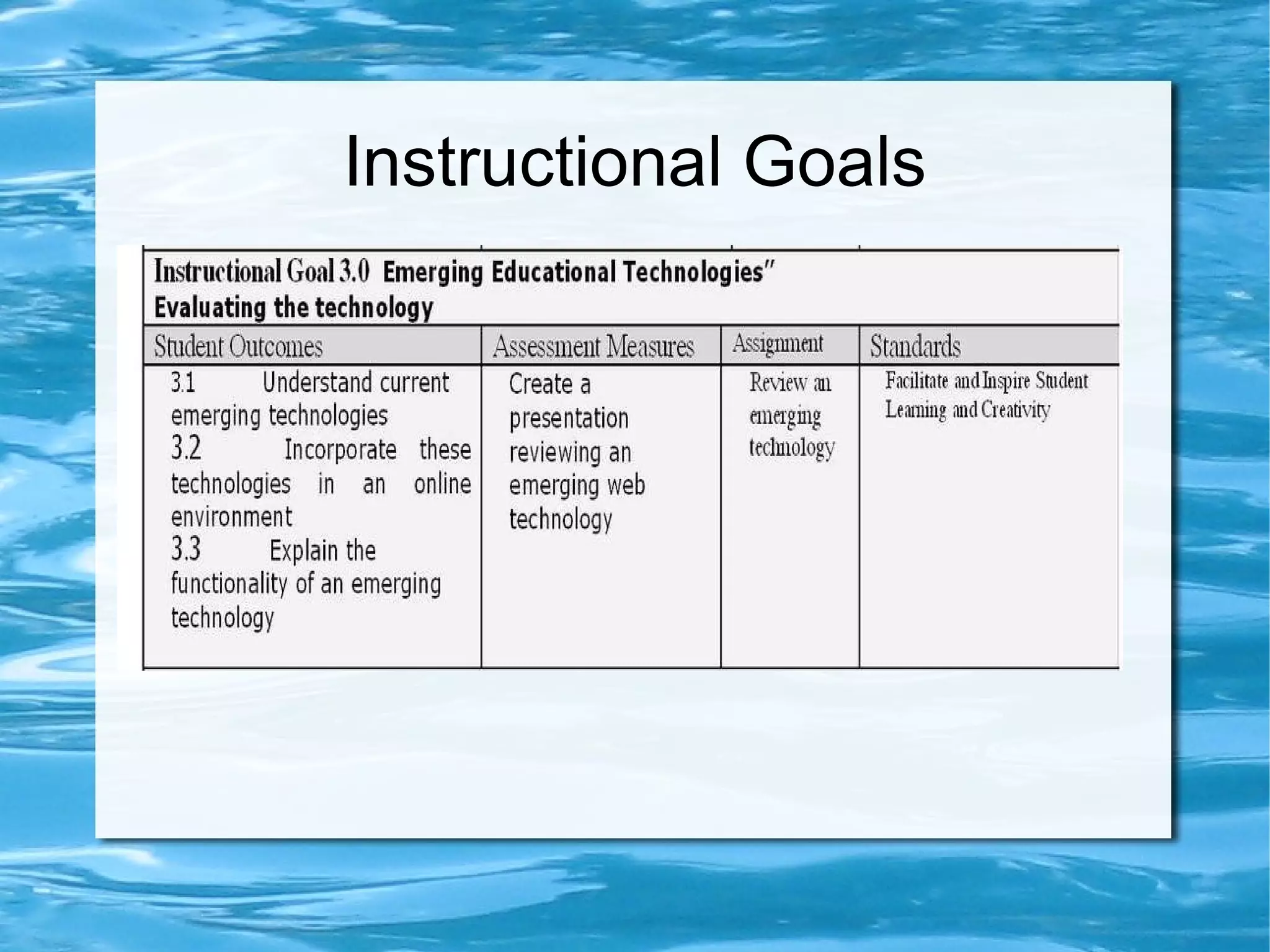
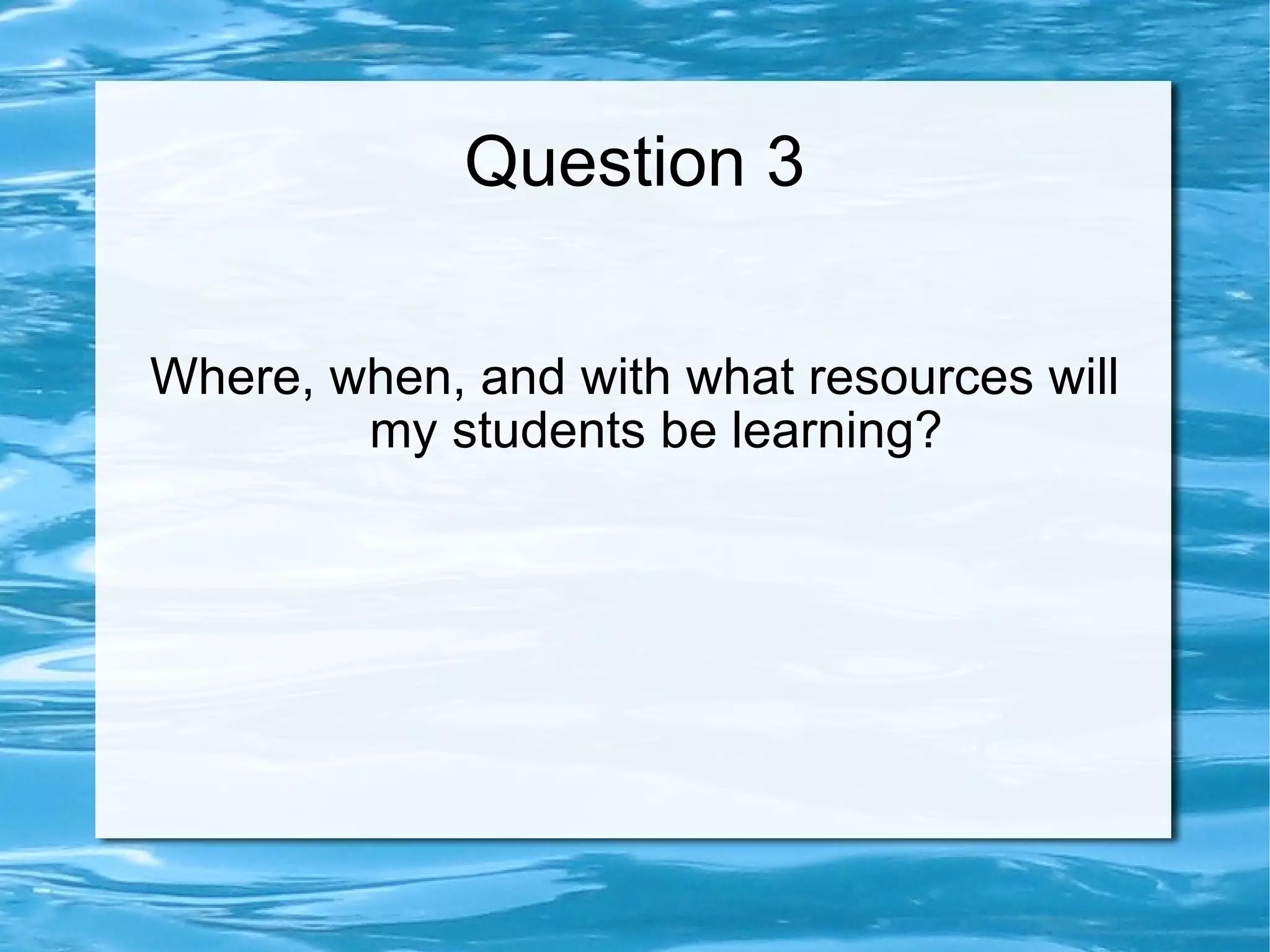
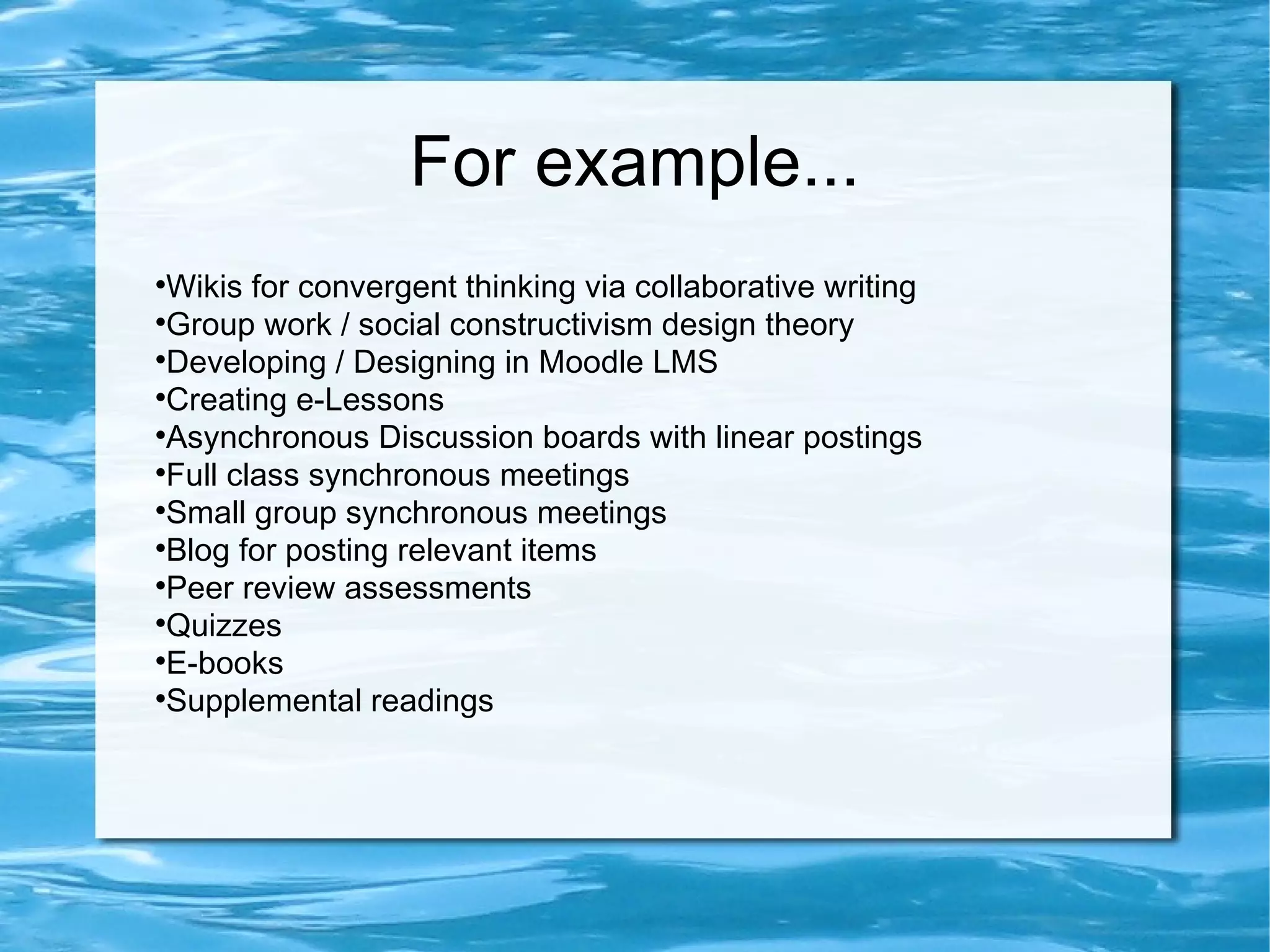
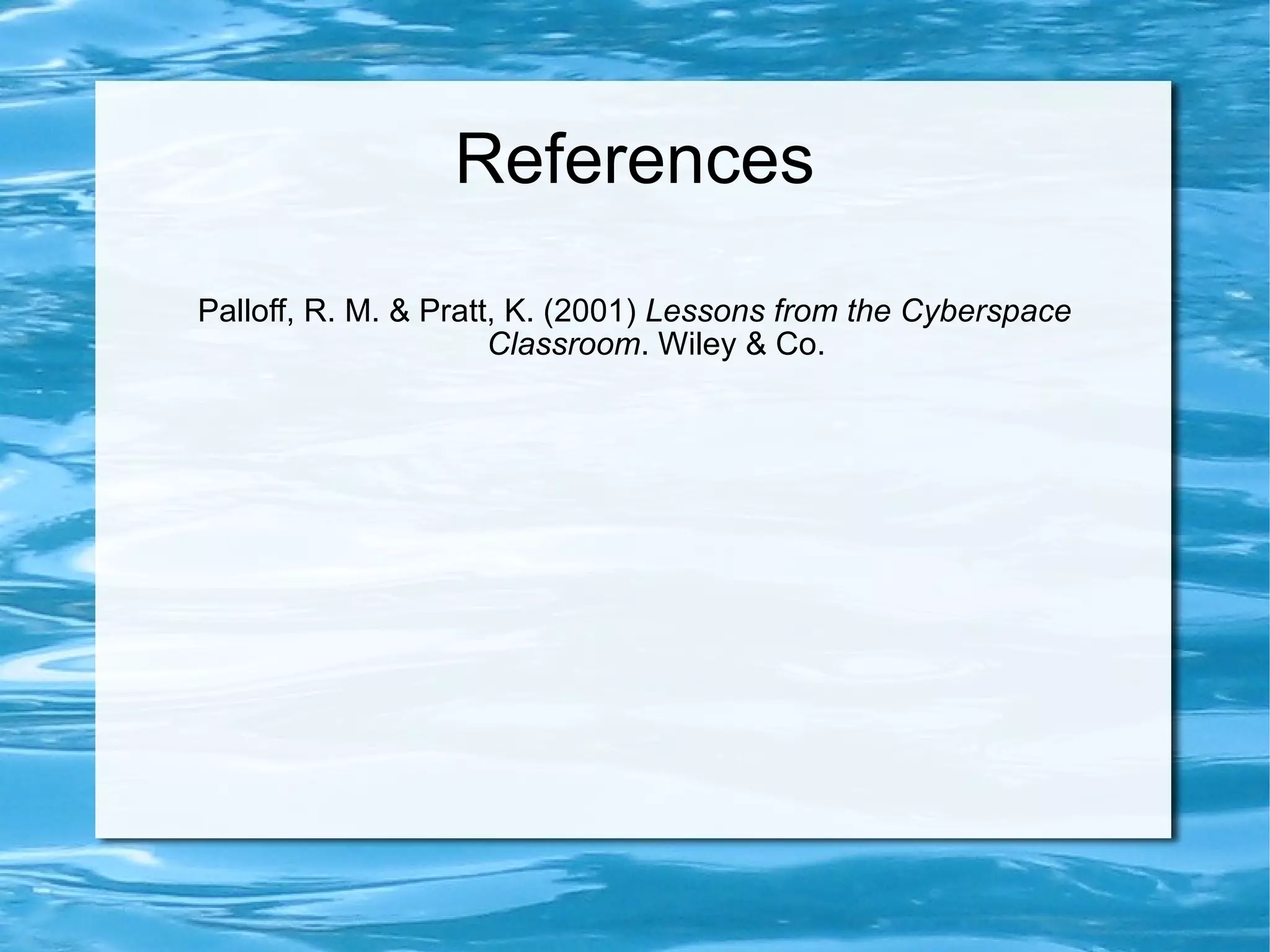
This document outlines three main questions to consider when transforming a course for e-learning: 1) Understanding the students - their technological skills, online learning experience, and preferred learning style. 2) Determining the learning outcomes and what students should know, feel, or be able to do. 3) Considering where, when, and with what resources students will learn - including online tools, synchronous/asynchronous meetings, peer reviews, and supplemental materials.









